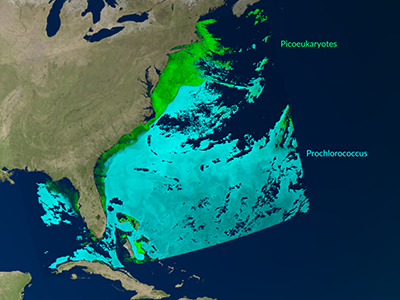PACE - First Look at OCI, HARP2, and SPEXone data
[04-May-24]
NASA's Plankton, Aerosol, Cloud, ocean Ecosystem (PACE) spacecraft was specifically designed to study the invisible universe of Earth’s sea and sky from the vantage point of space. We've measured 4-6 colors of the rainbow for decades, which has enabled us to "see" phytoplankton from space through the lens of its primary photosynthetic pigment, chlorophyll-a. PACE's primary instrument is the first of its kind to measure all the colors of the rainbow, every day, everywhere. That means we can identify the type of phytoplankton behind the chlorophyll-a. Different types of phytoplankton have different effects on the food web, on water management, and on the climate, via their impact on the carbon cycle.
PACE is also designed to see the invisible world of our atmosphere by measuring microscopic particles known as aerosols. It uses two instruments for that purpose. HARP2 looks through the atmosphere and can tell us what types of aerosols are in the air. In this visualization, the darker brown areas indicate smoke from some uncommon fires in the Southeast. SPEXOne is another polarimeter instrument, but it covers a narrower swath and measures the size of aerosols. That particularly helps us understand how they reflect or absorb solar radiation, which is one of the most important remaining mysteries in climate science.


